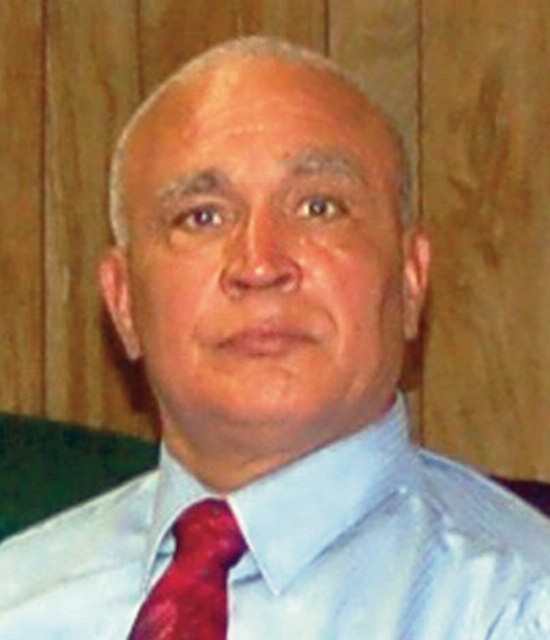Fuming Over R’wood Reservoir Project
Frustrated residents and conservationists blasted city and state officials during a public meeting Monday night, June 30, at Glendale’s St. Pancras Pfeifer Hall over plans to breach the reforested Ridgewood Reservoir’s basin walls.

Representatives of the city Parks Department and the state Department of Environmental Conservation (DEC) held the session to outline plans to “decommission” the Ridgewood Reservoir as a staterecognized high-hazard dam. Taken completely out of the city’s water system and drained decades ago, the basins have since been filled naturally with plant and wild life.
The only water remaining in the reservoir is a shallow pond in its center basin believed to be no greater than 5′-deep, according to the Parks Department’s Joelle Byrer.
State regulations, according to DEC Region 2 Director Venetia Larson, require that all dams in active use be improved to modern building standards, which would involve extensive and costly renovations.
But “the Parks Department decided to decommission” the Ridgewood Reservoir “so it no longer has the capability of holding [large amounts of] water,” she stated. Ridgewood Reservoir is considered a high-hazard dam since it sits on a hill overlooking surrounding communities; when it was full of water, there was a risk of catastrophic floods to those neighborhoods if the structure failed in any way.
Many in attendance criticized the Parks Department’s decommissioning plan, which involves installing two 4′-tall culverts on the northern end between the basins and a large, 11′-tall and 14′-wide culvert on the southern end of the westernmost basin adjacent to Vermont Place. To install the precast culverts and allow access for construction vehicles, Byrer stated, the Parks Department would install a road from the Vermont Place entrance crossing the western basin.
Byrer stated the Parks Department would remove part of the road when the project is finished, but leave behind a gravel path to provide maintenance workers access. Invasive trees and other plant life would be removed from the western basin and replaced with trees suitable for the reservoir’s environment, she noted.
Those advocating for the reservoir’s preservation, however, claimed the proposal would cause more damage than its worth-and questioned its necessity given the reservoir’s reforested state.
“This is a complete disturbance of everything,” said Steve Fiedler, who co-chairs Community Board 5’s Parks Committee. “There are a number of ways to do this without disturbing” the western basin’s environment, which is believed to contain wetlands possibly eligible for DEC designation.
Local resident Tom Dowd slammed the proposal as bureaucratic mismanagement, noting that the reservoir “no longer impounds water.” He claimed the project would “destroy” the natural ecology that evolved at the reservoir and disrupt a stopover on the “Atlantic Flyway,” a name for a migratory bird path through the Eastern Seaboard.
“Think of the environment-the whole environment-and not just your silly breach,” he added.
Alon Dominitz, chief of dam safety for the DEC’s Division of Water, charged the reservoir in its present form is still capable of retaining water. Others, however, questioned how that would be possible, as the reservoir is disconnected from the city’s water system.
Dowd countered the city receives an average of 38″ of rainfall per year, and it would not be enough to cause large amounts of water to be retained within the reservoir. Critics previously suggested it would take a rainfall of biblical proportions to refill the reservoir.
“By your own definition, it’s not necessary,” Dowd said. “It’s already a non-hazardous dam.”
When asked later about the presence of water in the center basin, Byrer indicated the water-which apparently did not drain due to an unpunctured clay lining within the basin-has held at a steady 5′-high level due to the natural water cycle.
David Quintana questioned why the larger culvert is being placed along Vermont Place and not on the Jackie Robinson Parkway, the northern boundary of the basin. Byrer claimed the latter option would result in the closure of the reservoir’s perimeter paths, which recently reopened after extensive renovations.
Quintana dismissed her answer as “bogus.”
Attendees also pressed the DEC for the status of an application submitted in 2010 to declare the Ridgewood Reservoir as a public wetland. The DEC’s Stephen Zahn claimed the agency had yet to address it due to a lack of staffing and more pressing matters related to environmental concerns following Tropical Storm Irene in 2011 and Hurricane Sandy in 2012.
Zahn expressed hope the agency would tackle the application with an infusion of staff scheduled to be assigned to the department in the months ahead.
Others were skeptical of the decommissioning plan and the Parks Department real intentions, citing the agency’s previous proposal to clear the western basin and build new athletic fields and other standard park amenities. Jonna Carmona-Graf, the Parks Department’s chief of program management for capital projects, insisted no development plans are on the table, as the Bloomberg administration pulled funding for the project due to the 2007-08 economic crisis.
“At this point, there is no money or staff assigned for development” of the Ridgewood Reservoir, she stated.
The Parks Department held hearings last year on three concepts for creating a natural park scheme at the Ridgewood Reservoir, but Carmona-Graf and Byrer noted the agency does not have available resources to advance those plans.
The decommissioning plan must be approved by August, under state regulations, but Board 5 Chairperson Vincent Arcuri called for a waiver or indefinite extension of the deadline, given the concerns voiced at the meeting. Larson stated “there is a process and we will take that into consideration.”
































